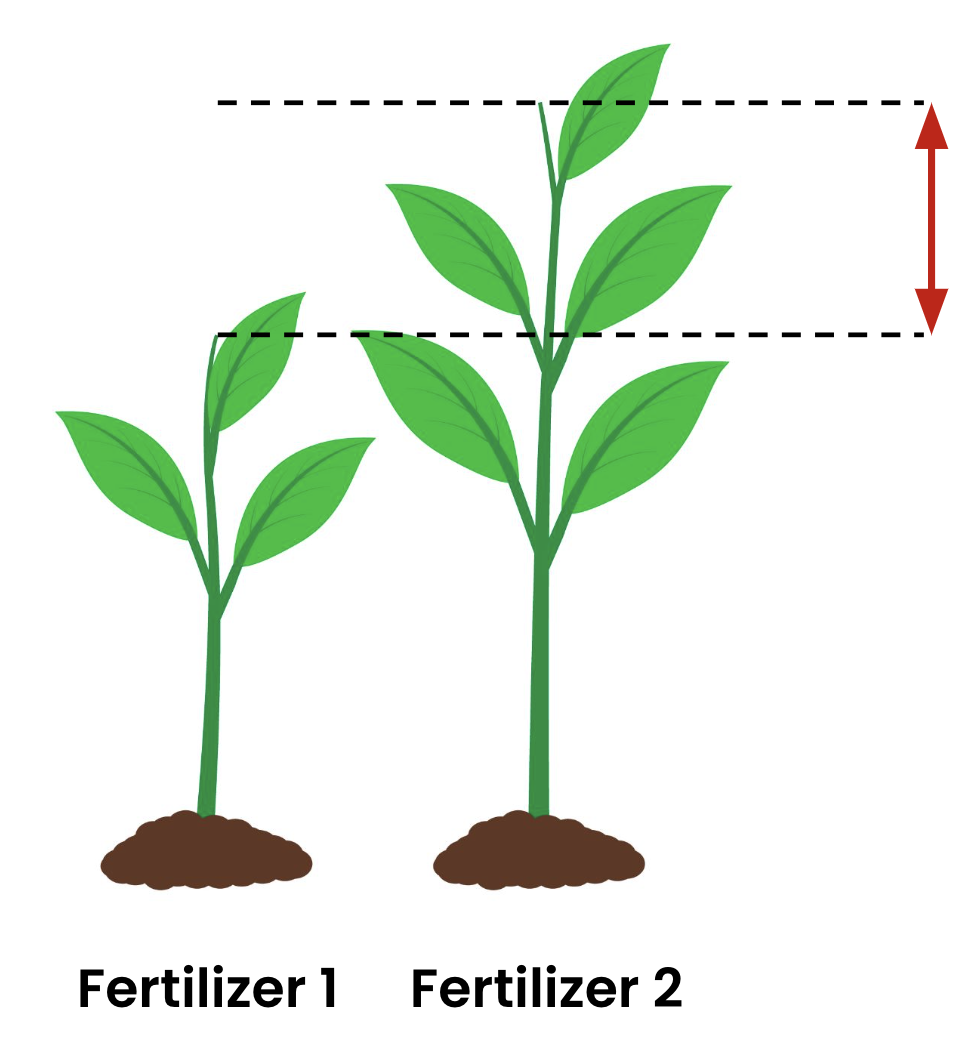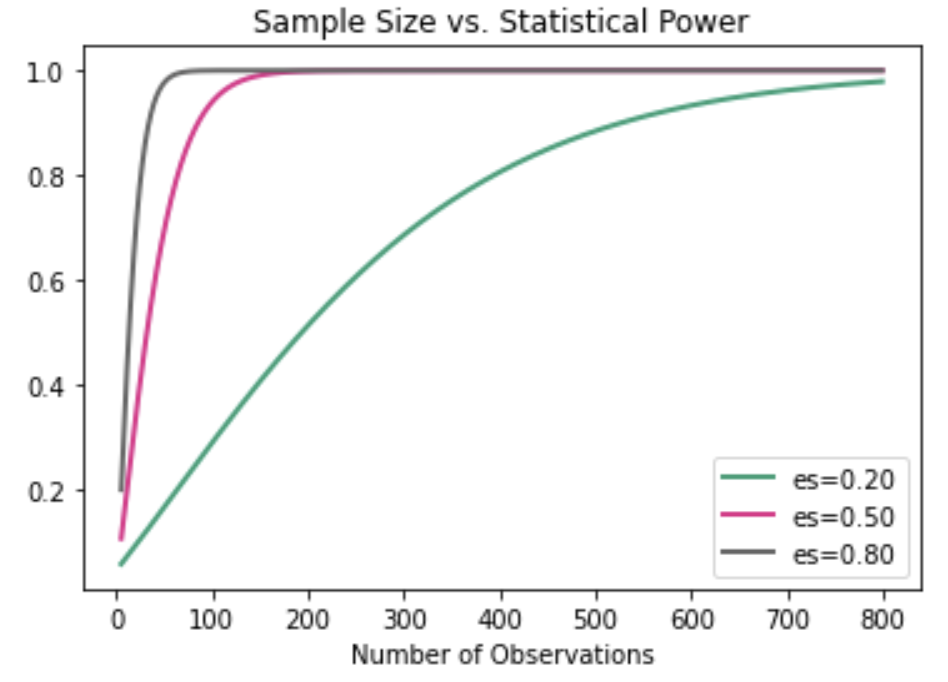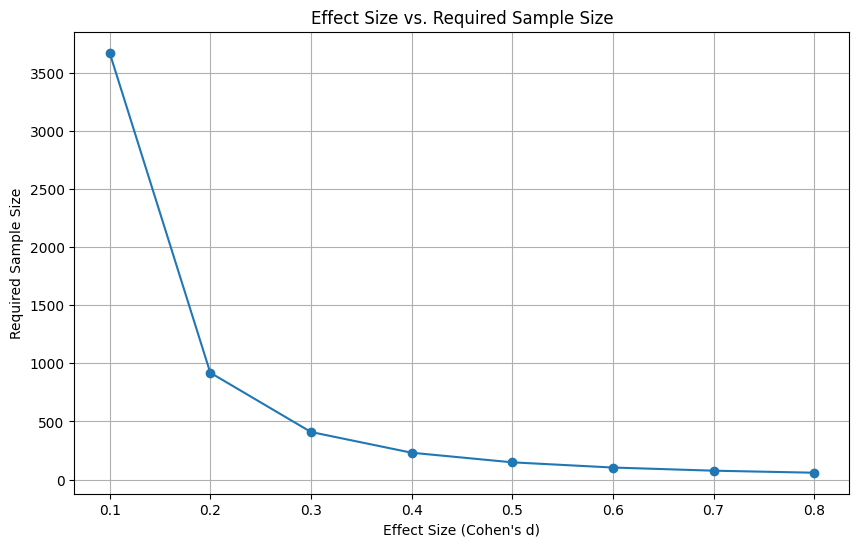Power analysis: sample and effect size
Experimental Design in Python

James Chapman
Curriculum Manager, DataCamp
A primer on effect size
- Effect size: Quantifies the difference between two groups
- Cohen's d: Standard measure for effect size

The dataset: video game engagement
- 60 participants
- 30 assigned randomly to Action
- 30 assigned randomly to Puzzle
video_game_data.head()
Game_Genre Engagement_Time
0 Action 5.1
1 Puzzle 4.4
2 Action 7.2
3 Action 5.3
4 Puzzle 2.7
Calculating power overview
Power: the probability of correctly rejecting a false null hypothesis: ($1 - \beta$)
- Ranges between
0and1(certainty in ability to detect a true effect)
- Ranges between
Assume
effect_size=1from historical data
from statsmodels.stats.power import TTestIndPower power_analysis = TTestIndPower()power = power_analysis.solve_power(effect_size=1, nobs1=30, alpha=0.05) print(power)
0.9677082519951168
Cohen's d formulation
def cohens_d(group1, group2):diff = group1.mean() - group2.mean() n1, n2 = len(group1), len(group2) var1, var2 = group1.var(), group2.var()pooled_std = np.sqrt(((n1 - 1) * var1 + (n2 - 1) * var2) / (n1 + n2 - 2))d = diff / pooled_std return d
Pooled Standard Deviation: $\sigma_{p} = \sqrt{\frac{(n_1 - 1) \times \text{var}_1 + (n_2 - 1) \times \text{var}_2}{n_1 + n_2 - 2}}$
Cohen's d for video game data
action_times = video_game_data[video_game_data['Game_Genre'] == 'Action']['Engagement_Time'] puzzle_times = video_game_data[video_game_data['Game_Genre'] == 'Puzzle']['Engagement_Time']d = cohens_d(action_times, puzzle_times) print(f"Cohen's d: {d}")
Cohen's d: 1.161524633221452
Understanding sample size and power
- Trade-off in balancing power and sample size
- Larger sample sizes increase study power

1 https://grabngoinfo.com/power-analysis-for-sample-size-using-python/
Sample size calculation in context
- Response variable:
engagement_time
from statsmodels.stats.power import TTestIndPower
power_analysis = TTestIndPower()
required_n = power_analysis.solve_power(effect_size=d, alpha=0.05,
power=0.99, ratio=1)
print(required_n)
28.237827708942007
Visualizing sample size requirements
import numpy as np
import matplotlib.pyplot as plt
effect_sizes = np.linspace(0.1, 0.8, 8)
sample_sizes = [power_analysis.solve_power(effect_size=es, alpha=0.05, power=0.99,
ratio=1) for es in effect_sizes]
plt.figure(figsize=(10, 6))
plt.plot(effect_sizes, sample_sizes, 'o-')
plt.title('Effect Size vs. Required Sample Size')
plt.xlabel('Effect Size (Cohen\'s d)')
plt.ylabel('Required Sample Size')
plt.grid(True)
plt.show()
Visualizing sample size requirements

Let's practice!
Experimental Design in Python

